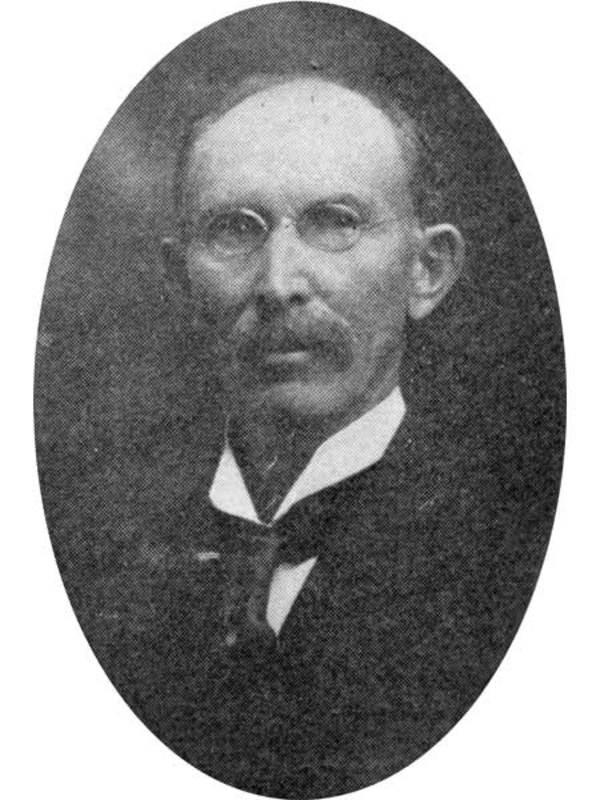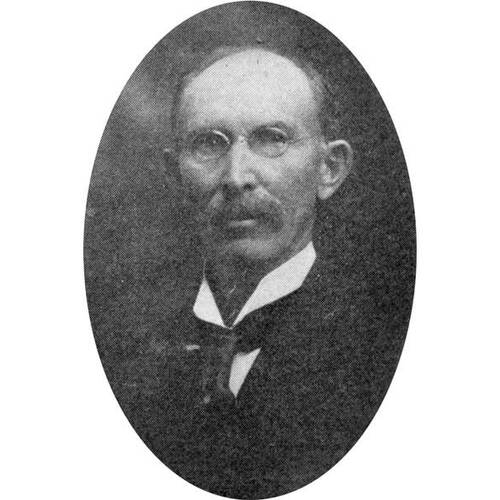
Source: Link
SCALLION, JAMES WILLIAM, teacher, farmer, and agrarian leader; b. 14 Feb. 1842 in County Wexford (Republic of Ireland), elder son of William Scallion and Catherine O’Donohue; d. unmarried 24 April 1926 in Virden, Man.
James Scallion immigrated to Upper Canada around 1850 with his family. The Scallions first settled near Ancaster, but were living in Delaware, Middlesex County, by 1871. After attending the Toronto Normal School in 1867, James taught school for five years before joining his family in Thorold, where he and his brother operated a mercantile business. In 1882 he and his siblings joined the thousands of Ontarians who followed the transcontinental railway to western Canada. They went first to Stonewall, Man., but settled in 1883 in Virden, situated along the main route of the Canadian Pacific Railway in southwestern Manitoba. There they purchased 960 acres and created a prosperous grain and stock-raising farm called The Grange.
By 1900 Manitoba’s economy was booming. Farmers were creating huge surpluses of grain for export, but most believed that their prosperity was greatly impeded by high tariffs and the monopoly grain-elevator companies held on the local market. To avoid the high dockage fees exacted by these companies and the low prices they paid, farmers wanted to load boxcars directly and ship their grain themselves. The federal government responded with the Manitoba Grain Act of 1900, which required railway companies to make grain cars available to farmers as requested. Bumper wheat crops in 1901 and 1902 created a severe shortage of cars, however, and farmers believed that elevator companies received precedence. This situation persuaded agriculturists in the North-West Territories to strengthen their voice by forming the first grain growers’ association, officially established in January 1902. Scallion joined a committee of agriculturalists from Virden to arrange a special meeting with William Richard Motherwell*, one of the founders of the Territorial Grain Growers’ Association. The meeting, held on 7 Jan. 1903, resulted in the formation of the Virden Grain Growers’ Association with Scallion as president. Scallion travelled extensively across Manitoba, encouraging other communities to follow Virden’s example, until the Manitoba Grain Growers’ Association, a provincial organization independent of the territorial organization, was created in Brandon in March 1903. Scallion, chosen president, told the assembly that “40,000 farmers had produced 100,000 bushels of wheat and they should all be wealthy but where was the wealth? Certainly not in the farmers’ hands but in the homes of the manufacturers, railway promoters, and grain dealers.” In 1904, suffering from impaired hearing, he retired as president; he would remain honorary president for life. He continued to travel to meetings across the province, urging support for the establishment of a cooperative grain company. Formed in 1906 to handle members’ grain in competition with private companies, the Grain Growers’ Grain Company would evolve into the United Grain Growers Limited in 1917.
In December 1910 Scallion joined other agrarian leaders, such as Ernest Charles Drury*, Robert Sellar*, and James Speakman*, in taking a delegation of over 800 farmers to Ottawa to put their grievances directly before the Canadian government. At the meeting there, Scallion spoke in support of the removal of the high tariff that crippled farmers who were dependent upon imports of agricultural products and implements from the United States. The election of 1911 was fought primarily on the issue of reciprocity with the United States, but the Liberals, whose finance minister, William Stevens Fielding, had introduced the reciprocity agreement, were defeated. The fact that some prominent Liberals, including Clifford Sifton, opposed reciprocity heightened farmers’ belief that neither political party represented the interests of western farmers.
By the end of World War I farmers were ready to take political action. The national farmers’ platform of resolutions first presented in 1910 [see Speakman] was revised in 1918 and farmers were encouraged to vote for candidates who endorsed it. In January 1920 the Manitoba Grain Growers’ Association adopted the platform, changed its own name to the United Farmers of Manitoba, and committed itself to political action. Scallion was nominated for the presidency of the new organization, but his name was withdrawn because he was too ill to serve. In 1922 the United Farmers formed the first farmers’ government in Manitoba under John Bracken*. That same year the Manitoba Agricultural College honoured Scallion for “his contribution to the social and economic betterment of the farm community.” He had taken the first steps in his province to provide farmers with a mechanism for altering the balance of economic power in western Canada.
Near the end of his life, James Scallion and his sister Hannah created two permanent philanthropic endowments, one to support the Virden hospital and the other to maintain the Virden cemetery, where Scallion was buried when he died in 1926.
AO, RG 2-128-1-3; RG 2-128-6-2; RG 2-301-1-3, certificate 2499. LAC, RG 31, C1, 1861, Ancaster, Ont.; 1871, Delaware, Ont.; 1881, Thorold, Ont.; 1891, 1901, Virden, Man. Man., Legislative Library (Winnipeg), Biog. scrapbooks, B8: 73. Brandon Daily Sun (Brandon, Man.), 1903-26. Grain Growers’ Guide (Winnipeg), 1910-26. Manitoba Free Press, 1903-26. Virden Empire-Advance, 1907-26. Ida Clingan, The Virden story, 1882-1957: Virden’s 75th anniversary celebration, July 21 to 26, 1957 (Virden, 1957). R. D. Colquette, The first fifty years: a history of the United Grain Growers Limited (Winnipeg, 1957). F. H. Schofield, The story of Manitoba (3v., Winnipeg, 1913). L. A. Wood, A history of farmers’ movements in Canada (Toronto, 1924; repr., intro. F. J. K. Griezic, Toronto and Buffalo, N.Y., 1975).
Cite This Article
Karen Nicholson, “SCALLION, JAMES WILLIAM,” in Dictionary of Canadian Biography, vol. 15, University of Toronto/Université Laval, 2003–, accessed April 28, 2025, https://www.biographi.ca/en/bio/scallion_james_william_15E.html.
The citation above shows the format for footnotes and endnotes according to the Chicago manual of style (16th edition). Information to be used in other citation formats:
| Permalink: | https://www.biographi.ca/en/bio/scallion_james_william_15E.html |
| Author of Article: | Karen Nicholson |
| Title of Article: | SCALLION, JAMES WILLIAM |
| Publication Name: | Dictionary of Canadian Biography, vol. 15 |
| Publisher: | University of Toronto/Université Laval |
| Year of revision: | 2005 |
| Access Date: | April 28, 2025 |



